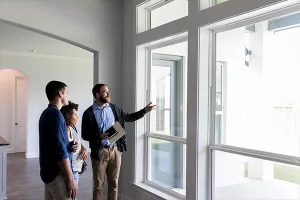
Recent data suggests that 90% of organizations will adopt some combination of remote and on-site work as they emerge from COVID-19 restrictions. This new model is already bringing dramatic changes in how groups meet, and a combination of in-person attendees and remote participants is already becoming an inevitable component of meetings and events.
While virtual meetings and events extend the reach of our REALTOR® associations and attract more members, challenges remain in online engagement and building trust. Because real estate is such an interactive, face-to-face, transactional profession, our members are naturally gregarious people. Members have expressed to me the belief that the lack of live meetings and events has hampered their ability to connect with others.
It’s hard to argue that point, since there is less spontaneity in the virtual world, and attendees are less likely to meet and interact in a virtual space. The lack of personal connection and sometimes the overall seriousness of online events could result in less excitement compared to live settings. That said, there are strategies for navigating the hybrid world to address members’ concerns.

Generational Expectations
There’s a generational component to hybridizing strategies because our members come from so many cohorts. Baby boomers tend to focus on technology that’s easy to use, simple, and convenient.
Members of Generation X often want to know how a meeting will be set up, addressing their desire for preparation before meetings. Use real-world examples in meeting content to address the generation’s desire to work with factual information, and ensure you are not wasting their time, because they like to be in control of it.
For Generation Y, include social networking components that support their need to hear peer opinion. Generation Y relies on technology for work, gaming, and entertainment, and will respond if the meeting is fun.
Virtual Togetherness
Participants in a physical meeting room may have an unfair advantage over remote colleagues who might feel disconnected and unable to pick up on social cues. Being in the same room offers a general feeling of community togetherness, and it may be more difficult for someone joining via video to know when they can find a gap in the conversation to talk. Detecting facial expressions, body language, and the general “vibe” of a meeting is trickier when you’re not actually in the meeting. This could lead to those in the room dominating the proceedings and creating a disconnect among colleagues.
Using video in a meeting is powerful, but it isn’t as crucial as having good audio. Just as you wouldn’t hold an in-person meeting with someone jackhammering in the room, the same consideration applies to ensuring that the audio remote participants hear is clear and strong. Chat is useful, but don’t relegate remote attendees’ participation to text only.
To design meetings for all attendees, review each activity or exercise, focusing specifically on how remote participants will engage.
Consider video from the remote participant’s perspective. As you design the meeting, continually ask yourself: What do remote participants need to see to engage completely? They should be able to see the faces of in-room attendees, shared presentations, physical documents or handouts, and content created during the meeting.
Tactics for Integrating All Voices
To design meetings for all attendees, review each activity or exercise, focusing specifically on how remote participants will engage. Consider what tools and techniques—digital or otherwise—can be used to maximize their interaction with in-room attendees. For example, if you need to poll the group, use a platform to collect everyone’s input in real time. This puts remote participants on an equal footing, unlike a show of hands or relying on verbal feedback.
If the meeting design calls for putting people into breakout groups, putting all remote participants in a single group sends the wrong message by reinforcing their physical absence. It’s worth the extra logistical and technical effort to integrate remote participants across several breakout groups to accentuate their equal status.
Meetings with in-person and remote participants require a bit more forethought, but they can be a valuable tool in today’s REALTOR® association. Hopefully, these suggestions will help you run those hybrid meetings productively and seamlessly.









